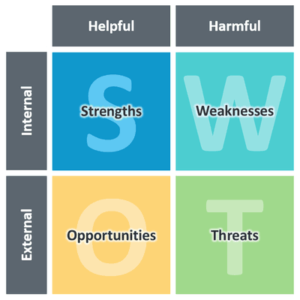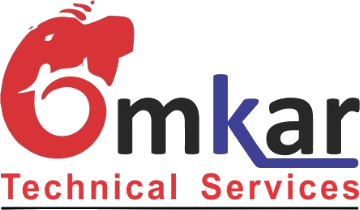SWOT Analysis of the Instrumentation Industry in India
This report presents a current and future scenario of instrumentation usage, manufacture, and development in India against a backdrop of international trends and advances. In the light of liberalizing policies, the report brings out the Strengths, Weaknesses, Opportunities, and Threats (SWOT) applicable to Indian capability at the level of users, manufacturers, and institutions. Based on a field survey of 265 users, manufacturers, and experts, the findings lead to suggestions for specific modes of cooperation between R & D Institutions and Indian Manufacturers aimed at the improved internal capability to bridge the technological gap and face the competition which is increasingly expected from abroad.

Indian Instrumentation Scenario
Thanks to past protectionist policies, India stood among the lowest in the usage of instrumentation compared to its GDP (0.17%) in the mid-’80s. Indonesia and the Philippines were about comparable in this respect. The areas of instrumentation studied by us within the time and cost constraints, indicate growth in demand for modern instruments at a conservative 12%, to reach about Rs. 29 Billion in 2000-01. a growth of 2.5 times in seven years. At the same time, local production has been showing growth of around 17% which will provide about Rs. 20 Billion worth of instrumentation locally at the end of the century. At that time, instrumentation usage would be about 0.4% of Indian GDP.
This conservative picture shows that India will still be dependant at the turn of the century on imports for its more advanced instrumentation highest dependence on imports will be in Analytical Instruments (73%) followed by Instruments for Special Applications (52%). On the other hand, Process Instrumentation is nearly self-sufficient locally and will become more so by the end century. Details of demand vs supply along with a comprehensive list of imported equipment are provided in the body of the report.
About 10% of local manufacturers depended to a varying extent on technology obtained from national R & D organizations. The rest are equally dependent on foreign and in-house technology. While large and well-established names have foreign tie-ups it is the medium-sized technocrat that undertakes substantial in-house development. Regarding the extent of help desired from national R & D organizations, only 5% were enthusiastic to use it frequently, about 30% occasionally while a whopping 45% “never”. It is important that this reluctance be overcome through confidence-building measures between institutions and industry.
Only about 220% of the respondents were found to undertake actual product development. Technical efforts at the rest were aimed at up-gradation of previous product or indigenization (50%) while the remaining aimed at production-support activities such as quality, trouble-shooting, or tooling. There was no mention of serious basic research at any manufacturer. As a result, 42% of the respondents confessed to being 2-3 years behind international technology while another 5% indicated 3-5 years. On the other hand, users of instruments felt that locally available instruments were behind-times to an even greater extent resulting in the need for imports ranging from 25% in the Textile industry to as high as 85% in the Food Processing industry.
There is considerable dependence of the instrumentation manufacturers on imported components. Only one in eight of the respondents claimed to be less than 10% dependent on imported components: three out of four depended on imports up to 30%. Scope for imports is seen as unavoidable in the areas of sensors, Integrated Circuits (IC), and, in due course, on Surface Mount Devices (SMD), a situation which is also duplicated in the rest of the electronics industry. The important \need for local activity in advanced components is thus highlighted.
The power of electronics in instrumentation is being exhibited through Communication, Computation, and Control (C-cubed). Conversion of the analog parameter, digitalization of the signal, transmission to the processing center, integration into IC’s, consequent miniaturization, and compression of computing and software into Microprocessors and Memories has made possible (in compact packages) online manipulation of complex measurands with image processing. This has enabled immediate data-collection, detail analysis, meaningful display, leading to quick decision making which is so important in today’s fast-moving science, technology, industry, and commerce. More details are embodied in the body of the report.
Continuing research and improvement in advanced countries has enabled the probing of an ever-increasing range of parameters. As result, the worldwide usage of instrumentation has spread in a big way in the following activities in order of importance:
- Processing and Manufacturing Automation
- Personal and Home Applications
- Scientific Measurements
- Health Services
- Environmental protection
- Office automation & Communication
- Automobiles
- Power and Energy
Along with the proliferation of uses, the response speed, precision, analytical ability, and reliability of instruments have been increasing dramatically. Instrumentation is increasingly approached as a system rather than an individual instrument. Through the use of integration, the partitioning between sensing, analog processing, A/D conversion, communication, digital processing, computing, and the display is getting fuzzy and diffused. Several of these steps are being combined in convenient ways as desired by the designer for greater user convenience and appeal.
Key roles are being played by new types of sensors, by ever-larger memory devices, by powerful microprocessors, and by LCD displays. Indian instrument researchers (whether public or private) will have to first learn to master the applications of these devices (imported) to innovate better instrumentation systems. The actual availability of these important devices locally is, however, quite a way off … which can be the subject of separate study and planning.
